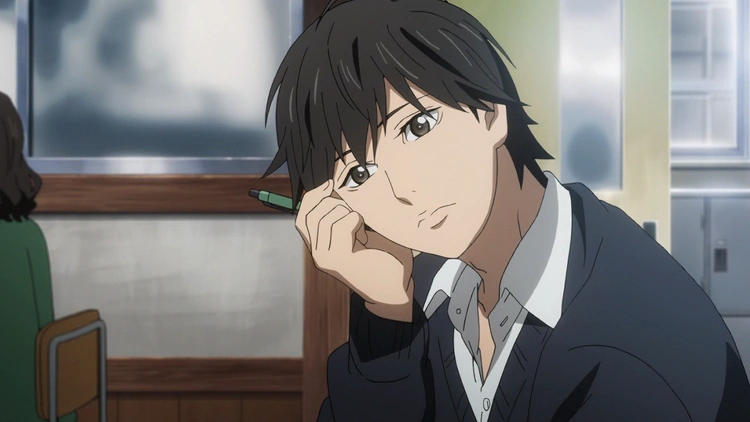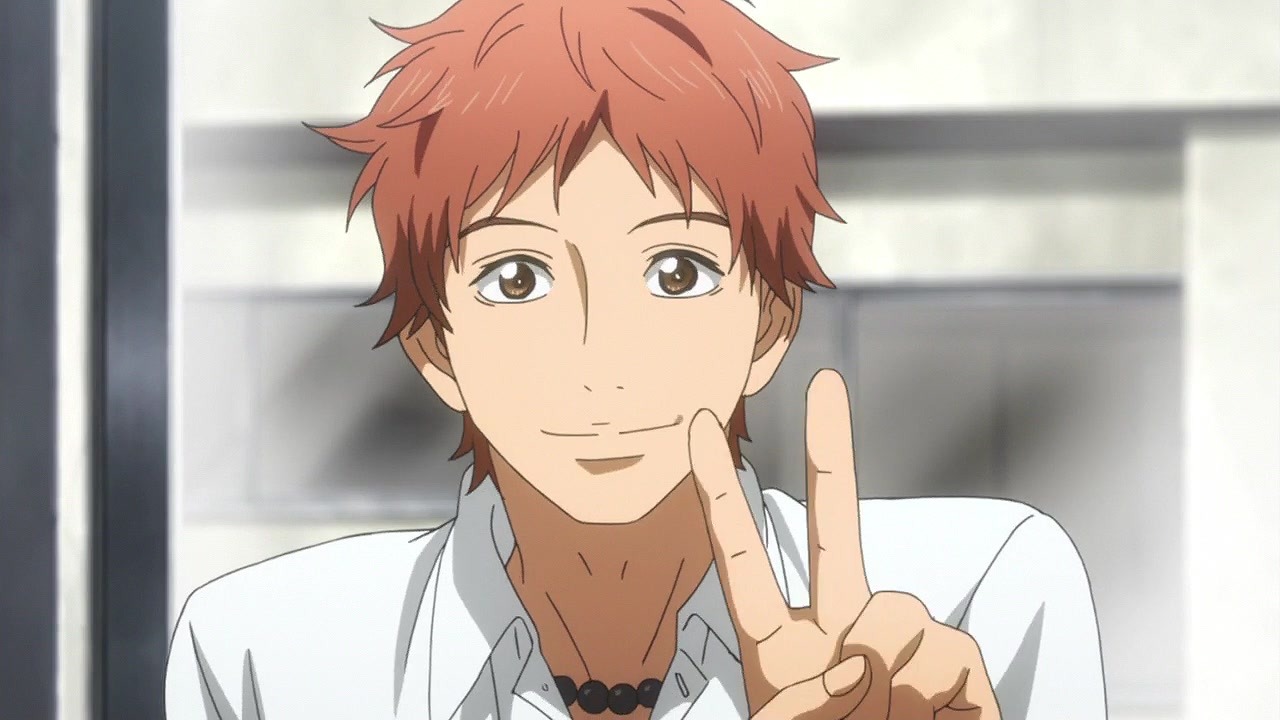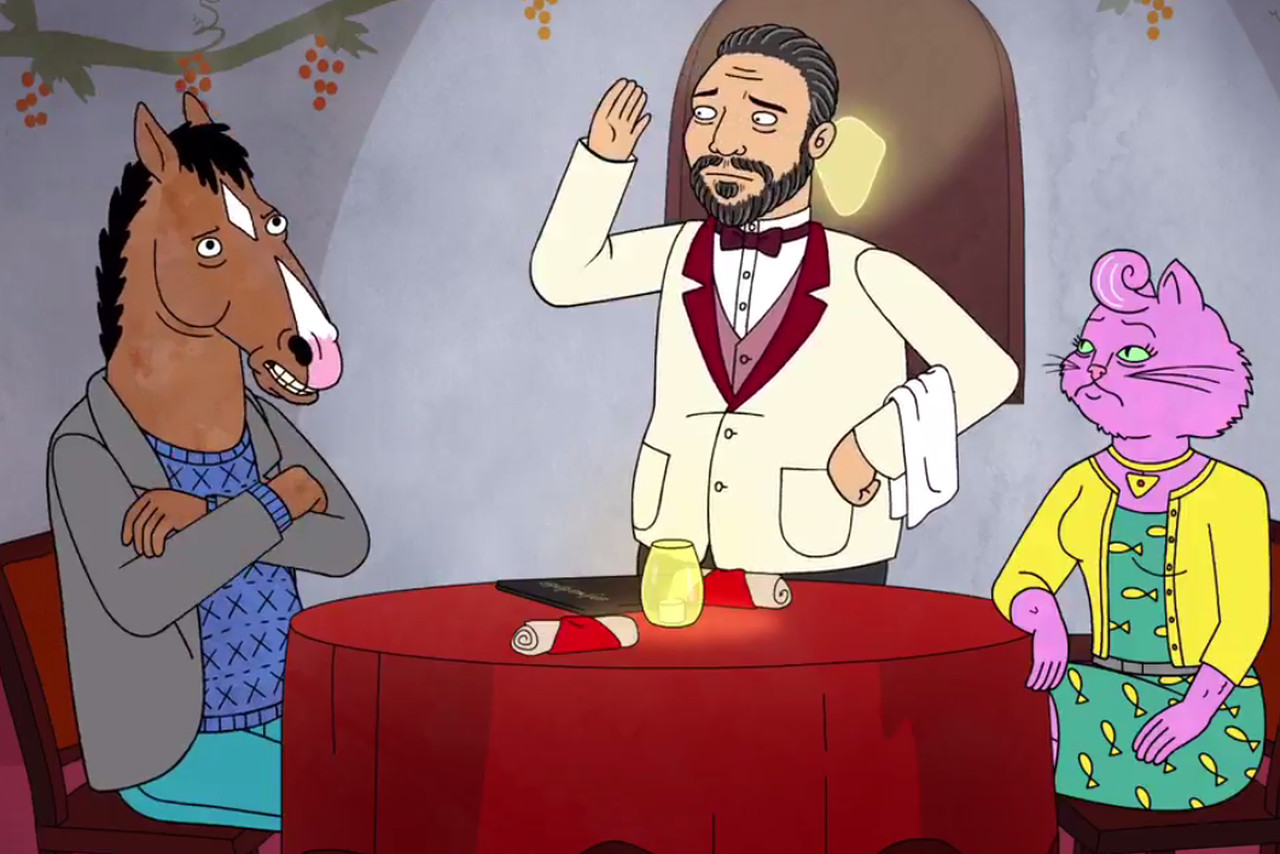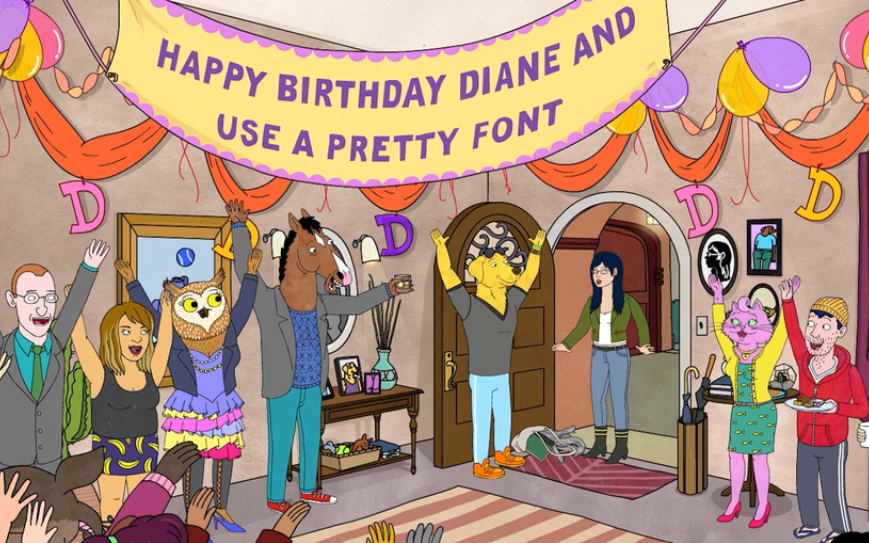Every so often, I like to sit back and watch simple, emotionally-powerful stories centered around characters going through difficult problems. Shows like OreGairu, White Album 2, and Free! wouldn’t be favorites of mine if that weren’t the case. I like these types of shows because, most of the time, they're the most insightful into how teenagers (or people in general) deal with issues and grow stronger as a result. These are anime that give viewers valuable life lessons, and can teach them how to confront their own issues and worries.
How is that relevant? Well, after watching shows like The Flash, Arrow, and Gurren Lagann, I felt compelled to watch a show, whether it be anime or otherwise, that was more down-to-earth. Anime is typically the best medium for these types of shows, so I decided to browse around. Upon looking at what this anime season had to offer, I chose orange. Oh, and in case anyone was wondering, I do realize Amanchu exists, and rest assured; I will finish it, as it has been excellent so far. This post, however, is about my first impressions of orange, and partially predicting how it will pan out. Light spoilers ahead, so if you’ve seen up until episode 4 of orange or don’t care, let’s get started.
Orange takes place in the city of Matsumono, Japan, and follows Naho Takamiya, a second-year high schooler. One day, she gets a letter from her future self, warning of her sorrowful future. These letters keep on telling her to do things differently, so that she and her friends can stop feeling regret over actions they did not take or did not take correctly. The letters’ main person of interest is Kakeru, the new transfer student that Naho begins to have feelings for. The letters consistently warn Naho that Kakeru does not have a future, and that measures need to be taken so that he does. Determined to save Kakeru, Naho takes the letters’ advice.
 |
| Naho, ten years after her second year of high school |
The premise is a nice twist on the typical high school romance formula, though it is very reminiscent of ERASED. You know, otherwise known as the show that everyone suddenly stopped talking about despite it splitting the community in half so ferociously that I had to make a video about it telling people to calm down. If you don’t see what I’m saying, both involve a future self communicating with a past self to save another person from certain death. The circumstances are different, obviously, but it is a glaring and curious similarity. This year in general has had an inordinate amount of “going back in time” shows, and while they definitely aren’t the most prevalent, it’s an odd connection.
 |
| Kayo from ERASED / Boku dake ga Inai Machi |
That is besides the point, though. Orange is as much about time travel as The Asterisk War is about being good, because the main focus of orange appears to be character interaction and consequence. Yes, many of Naho’s actions depend on the letters, but the show concentrates more on the results of those actions and how they either positively or negatively impact the future. For example, whenever she talks to Kakeru alone, Kakeru is noticeably happier. When she doesn’t, his smiles feel more fake, and he seems all the more mysterious. Or, when she’s feeling troubled, her friends notice her distress. The point is, everything you do has consequences that can change the future, even things that appear to be completely irrelevant.
 |
| Naho decides to go up to bat, as instructed by her future self, but her future self clearly didn't warn her about the dangers of not wearing a helmet |
Narratively, this subtly ties into the quasi-time travel element perfectly, but doesn’t bring time travel to the forefront like other shows do. However, this does unveil one of my main issues with these ideas so far, and that is how the letters negatively interfere with Naho’s life. I’m curious to see how the show explores how the lack of regret impacts the future, since regrets are ultimately part of what makes us who we are. If everything went well, after all, then we wouldn’t have mistakes to fix, and we’d never improve as individuals. The fact that orange has ignored this thus far, especially since I’m a little less than a third of the way through, is worrying to me. I’m sure it’ll have some relevance in future episodes, since the show has been too smart to completely disregard this perspective, at least so far.
 |
| Without regrets, we don't change |
Moving on, the main aspect of orange that holds this show together isn’t the time-travel stuff, but the well-defined characters. While it is true that the characters’ personalities are simplified, due to there being many characters, you do get a sense of their personalities and how they would act in certain situations. Naho is believable as a person who sacrifices her own desires for the sake of others, Suwa is a kind and lovable joker, Azusa is always cheerful and bubbly, Takako is cool, smooth, and pleasant, and Saku is funny and...there most of the time. Yeah, he's the character that gets the shaft the most, but he's not bad.
 |
| Going around the circle to Naho, the characters closest to the viewer in the foreground, and back: Naho, Azusa, Saku, Suwa, Takako, Kakeru |
Out of all of them, Kakeru is definitely the most interesting and developed. I haven’t quite seen a character like him before, mainly because of the intense visual storytelling surrounding him. From the visuals and cinematography, to some of his instances of dialogue, to his voice actor doing a terrific job, he seems like a person who is extremely depressed most of the time. Yes, he does smile and have fun, but it rarely feels genuine, and he doesn’t get as involved with his group of friends as one would think. There's an aspect of his mannerisms that just feels distant, like he's barely paying attention to his surroundings half the time. The only peak we get into why he’s like this is that his mother committed suicide, and while that is certainly tragic enough to send anyone into a downward spiral of depression, it’s implied that there’s more to the story than just that.
 |
| Kakeru always looks like he's pondering something sad |
Speaking of visual storytelling, the cinematography and directing in this show are outstanding. The visuals always seem to make you feel uncomfortable, with strange angles, spending too much time on a certain shot, or its constant use of asymmetry. These choices keep the viewer on edge, wondering if something bad may happen as a result of someone’s actions. The colors palate is very subdued, with greys and washed out greens being the stars of the show. This gives the show a unique visual flair, as no other romance (or slice-of-life for that matter) really looks like orange at all.
 |
| Gotta love those darker shades and grey, subdued feeling to everything |
The backgrounds are beautiful, and the character designs are...interesting. Sometimes the designs work, but you can tell that they were particularly hard to animate, as other times the characters look more like aliens than humans. I haven’t checked out the manga, but from the looks of it, most of these designs look better in their original form. Outside of the buggy transfer from drawing to animation, the actual character animation is pretty good, with some off-modeling here and there, but it could be worse.
 |
| Here is a rare instance of "quality" hands, and the character design somewhat faltering |
Another interesting visual aspect of orange is its use of montage to display the passing of time. While this isn't a particularly new way to use montage, there's a simple pleasantness to watching Naho's friend group hang around the city to the tune of happy music. It gives the viewer a true sense of the group's bond, and how the group just has fun being together. My favorite montage is when Naho is thinking about giving her lunch box to Kakeru in episode 2. Whatever the teachers say in their particular classes fades into the background, emphasizing how Naho's focused on the lunch box and not her studies. The cuts go from class to class, and there's a constant focus on Naho looking anxious. It's a brilliant way of showing how nervous Naho is through visuals and simulating the passing of time.
As for the music, it's decent slice-of-life fare, though sometimes the sound mixing is a little off. There were some moments where the music overshadowed the characters’ voices, but that may have been because I watched some episodes without headphones or whatever. The opening is wonder-bread generic from a visual standpoint, and the song feels more like a stand-in than anything that was truly made for the show. If anything, the opening song doesn't feel like it quite fits with orange's more melancholic tone. The ending song is also forgettable. On the other hand, I’d say the voice acting is excellent, especially the people who voice Kakeru, Naho, and Suwa. The actors truly breathe life into these characters, and I can’t imagine anyone else playing them.
 |
| The voice-acting is top notch |
Overall, orange’s first four episodes were rather enjoyable, with ups and downs. It isn’t anything I’d call amazing yet, but it has the potential to explore its ideas surrounding regret and choice. Heck, why introduce them if you won’t actually do anything with those ideas, right? I’ll definitely be continuing this one until the very end, and maybe I’ll do a Final Thoughts post or even a full review when it finishes. Until then, this has been HSMediaNerd, and I’ll see you guys next time.













